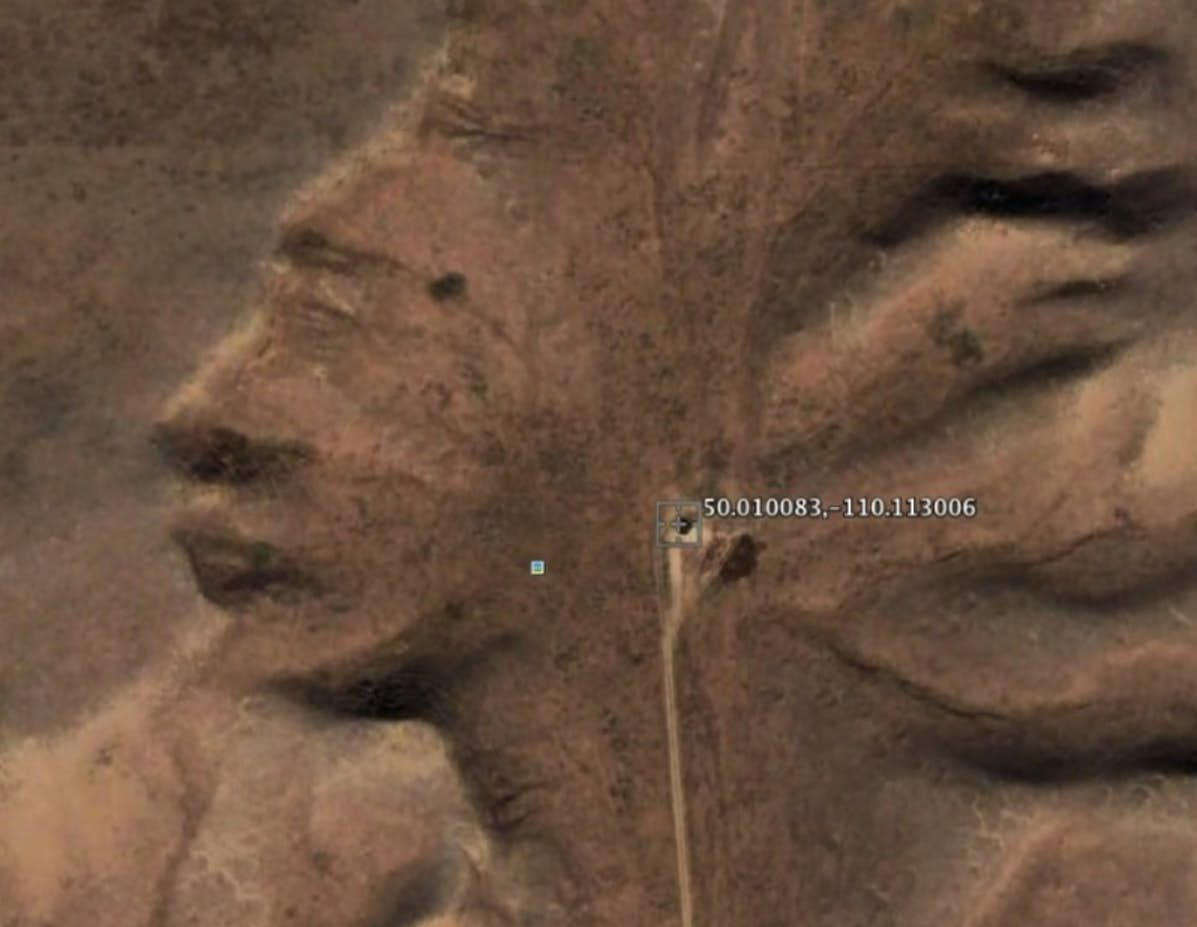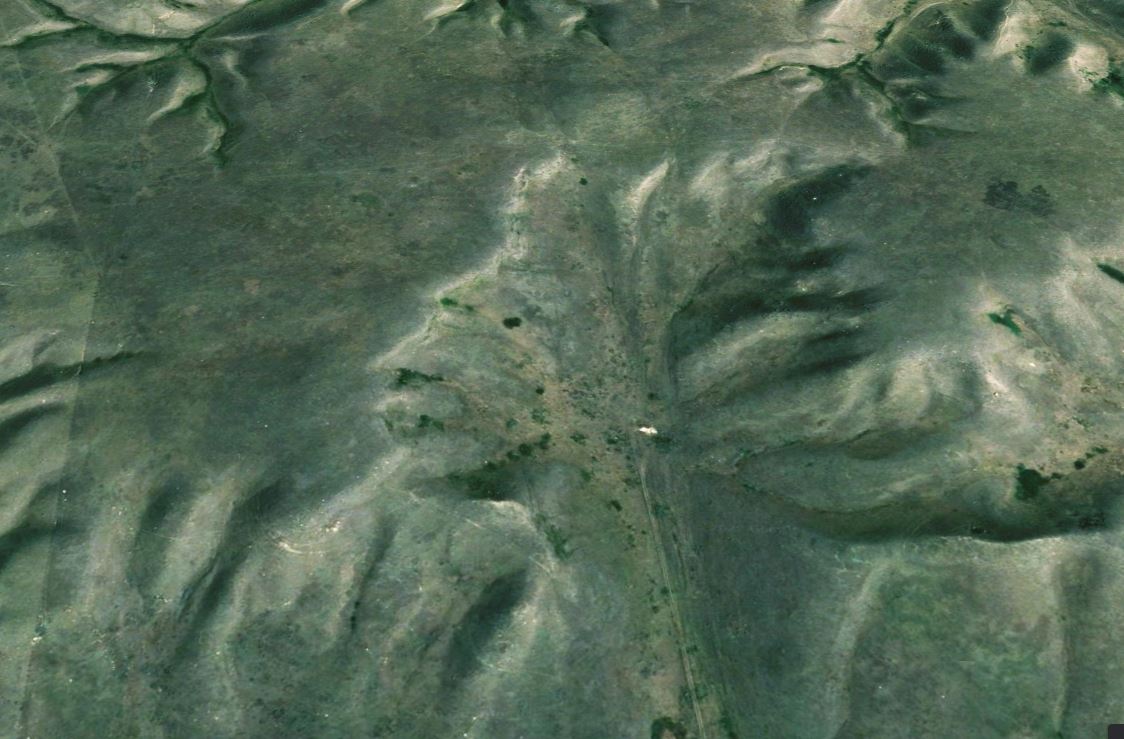


It's extremely common to see meaningful shapes in natural formations like clouds and rocks, even though the formations are natural and random. Pareidolia is the phenomenon of perceiving meaningful patterns where there are none. At that level of precision, variability due to your choice of assumptions for the modeling are likely to dwarf any meaningful output of the model. There isn't any evidence to suggest that this formation is anything but natural, and unless your geological model can accurately state that the likelihood of such a face in such an area is less than 0.0000001%, we should not be surprised to find a formation that looks like a face when looking at hundreds of millions of square miles of land area. I don't think you'll be able to model the geological and pattern recognition processes to generate a probabilistic estimate that's more precise than one part in a billion. Even if the chance of natural face formation in an area this size is one in a billion, it's utterly unsurprising to find a few faces scattered around the globe.

eBay may add a marketplace facilitator (sales tax) depending on your location. The chance that a natural face-like feature occurs somewhere on the earth's hundreds of millions of square miles of land area is virtually guaranteed. Badlands South Dakota c1932 RPPC Real Photo Postcard Guardian Of Cedar Pass. It is listed as the seventh of the top ten Google Earth finds by Time Magazine.The chance that this occurs in this particular spot is indeed small. The Guardian was also covered by Canada's Global Television. PCWorld magazine has referred to the formation as a "geological marvel". The Badlands Guardian was also described by the Sydney Morning Herald as a "net sensation". They altered the suggested 'Guardian of the Badlands' to become Badlands Guardian. Out of 50 names submitted, seven were suggested to the Cypress County Council. Abstract: This is an analysis of a large facial formation known as the Badlands. Suitable names were canvassed by CBC Radio One program As It Happens. Mayan Medicine Hat proportional image analysis. The feature was originally discovered by Lynn Hickox while examining images on the Google Earth application in November 2006.
Badlands guardian image tv#
It was the winner of the RTNDA National TV short feature award for that year. So how was it formedImage analysis by a Boston professor, who. In 2006 Medicine Hat's CHAT-TV Reporter Dale Hunter did a short feature on the Badlands Guardian. Furthermore, Mount Rushmore is a laterally viewed geoglyph TBG is only viewable from above. Its age is estimated to be in the hundreds of years at a minimum.

Although the image appears to be a convex feature, it is actually concave – that is, a valley, which is formed by erosion on a stratum of clay, and is an instance of the Hollow-Face illusion. The 'head' may have been created during a short period of fast erosion immediately following intense rainfall. The arid badlands are typified by infrequent but intense rain-showers, sparse vegetation and soft sediments. The head is a drainage feature created through erosion of soft, clay-rich soil by the action of wind and water. Its scale is much larger than the figures of Mount Rushmore. The apparent earphones are a road and an oil well, which were installed recently and are expected to disappear once the project is abandoned. Because of additional man-made structures, it also appears to be wearing earphones.
Badlands guardian image full#
Viewed from the air, the feature bears a strong resemblance to a human head wearing a full Aboriginal Canadian headdress, facing directly westward. The Badlands Guardian (also known as Indian Head) is a geomorphological feature located near Medicine Hat in the south east corner of Alberta, Canada.


 0 kommentar(er)
0 kommentar(er)
